Navigating Cape Town's congestion: Insights on how traffic woes impact drivers
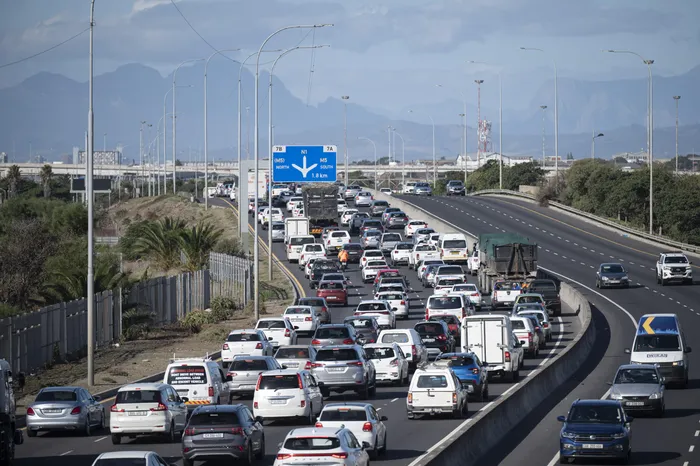
Cape Town drivers have been feeling the pain of traffic congestion across the city, and have been left frustrated.
Image: Armand Hough/Independent Newspapers
Capetonians have been feeling the pain of traffic congestion across the city, and have been left frustrated with very few avenues to direct that frustration.
Through casual conversation, anecdotal evidence, and global research, it is clear that the impact Cape Town traffic has on the lives of people and time they lose as a result.
Back in January, the 2024 INRIX Global Traffic Scorecard revealed Cape Town to be the ninth most congested city in the world, and that traffic was 13% worse than the previous year.
The year before that, Cape Town was in the same position on the same index.
INRIX says its 2024 Global Traffic Scorecard provides the most up-to-date methodology for understanding movement in urban areas across the globe.
The INRIX survey revealed that Capetonians, on average, experience a delay of 94 hours per year, versus the time they would have spent if they were driving during quieter, off-peak periods. This ‘delay’ was 83 hours in 2023.
Commute times are calculated by looking exclusively at the time it takes to get to and from major employment centers within an urban area from surrounding commuting neighborhoods, and its newest methodology includes accurate estimates of commuting distances using actual, observed trips.
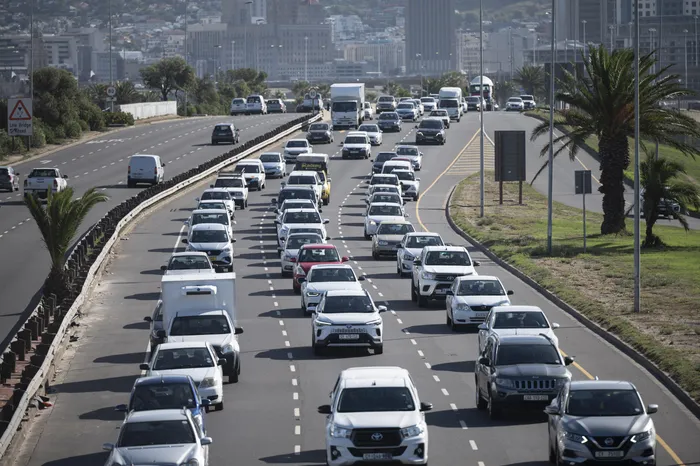
Cape Town drivers have been feeling the pain of traffic congestion across the city, and have been left frustrated.
Image: Armand Hough/Independent Newspapers
A number of Cape Town drivers have weighed in, with some touching on the time lost, overall frustrations and possible reasons. We’ve removed details that are too specific just to ensure their safety.
Cameron G. said: “I live in Simon's Town and work in the CBD. I drive in every day. It takes over an hour to get home in the evening. Leaving after 6pm does not help since there's still traffic.
“The City needs to implement a bypass that allows vehicles from Philip Kgosana to bypass the whole hospital bend intersection and rejoin the M3 near UCT. The city was also planning on building an additional lane past UCT heading in the direction of town. However, they needed to demolish the footbridge to do that and there were objections from a few local residents to this plan because they said they used the footbridge to walk their dogs on the mountain.
“The City has also planned for a long time to reorganise the intersections through Newlands on the M3 but this is taking years and they have not even started the process. The project is only in the planning stages it seems, by the time these projects are implemented it will be too late.”
Robin-Lee F: “Initially, I drove into the CBD with my own vehicle from Table View. It was an extreme nightmare and I was constantly late due to non-working traffic lights and taxi accidents. Koeberg Road, past the refinery, is backed up and taxis are driving recklessly - coupled with broken traffic lights - which often leaves all drivers in a frenzy. No traffic officials on duty and this usually causes mayhem.
“We often see taxis just driving in the MyCiTi bus lane. I then used Marine Drive, another headache as traffic remains bumper to bumper, taxis do the exact same thing with no regard for the rules of the road. I then started traveling with the MyCiTi bus because I thought it'd be cheaper and less traffic as it has its own driving lane.
“Well, I could just have stayed with my vehicle. Travelling with the bus is dangerous. I get a bus to the CBD from Woodstock Station and by the time the bus gets to this station people are already packed into the buses like sardines.”
Kayla W: “We get to work one day a week from home. We also have offices in Stellenbosch which is easier for me to get to in terms of travelling time, so I can work from there once a week. And then our main office is in the CBD. I leave home at 6am and it takes me anywhere from one hour to one hour 20 minutes to get to work from Brackenfell.
“I can leave at 2pm each day to avoid traffic and then I log on again at home to miss the traffic. We can also come into the office later if need be, so we have very flexible travel times as long as we get our work done and work our hours each day.”
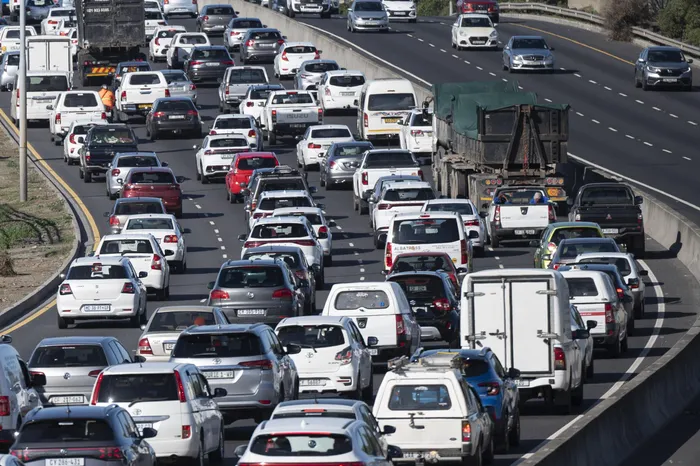
Cape Town drivers have been feeling the pain of traffic congestion across the city, and have been left frustrated.
Image: Armand Hough/Independent Newspapers
Storm S: “It’s terrible. Currently, I leave home at 6am and I get home at 6:30pm. I’ve been driving the same route for eight years and each year it gets even worse. Which I honestly have no idea how.
“At present, it’s had a very negative impact on my life. I’m currently in the process of changing hours. The biggest issue is trying to find time for everything. Trying to find time to exercise, get enough sleep, not eat at 9pm, spending quality time with my husband, doing grocery shopping, etc.
“Currently we have to tag team everything but there just isn’t enough time to have a balanced lifestyle… I’ve had to reduce my hours which means a pay cut. And that isn’t great in today’s economy either.”
Tammy H: “I work from home and don't travel into the CBD... but it would be lovely if they could get our freight system working better so that there are fewer trucks on the road. They mess up infrastructure, cause the worst accidents and slow traffic down so much.”
Mayco Member for Urban Mobility, Rob Quintas, said that one of challenges with Cape Town is that soon, its population will surpass Johannesburg’s, and that this influx is already adding to more traffic on our roads
“Cape Town is a growing city. Cities are dynamic; not static. No single city can remain unchanged when it needs to provide for an influx of people.”
He said that Cape Town’s average vehicle occupancy remains low, at just 1.57 people per vehicle in the morning peak and 1.52 in the afternoon peak (including the driver).
“These woefully inadequate occupancy levels place unsustainable pressure on the road network and underscore the need for more efficient, high-occupancy, and sustainable transport solutions.”
The City currently has a proposed Mobility and Access Plan for the Cape Town CBD open for comment, and is also busy with its Foreshore Feasibility Study to tackle some of the congestion issues raised.
The Mobility and Access Plan is included as part of the draft local spatial development framework (LSDF) for the Cape Town CBD that is available for public comment until 11 May 2025.
Meanwhile, the Foreshore Feasibility Study is under way and has not been concluded as yet. “A key priority is to develop an integrated transport and land use solution for the Foreshore Precinct.
“The current freeway viaducts carry significant traffic during the morning and afternoon peak periods. The scoping study is aimed at developing the optimum transport and land use solution to ensure long-term investment and economic growth of the Central City and Atlantic Seaboard, while maximising the precinct’s public amenity value and development potential,” Quintas said.
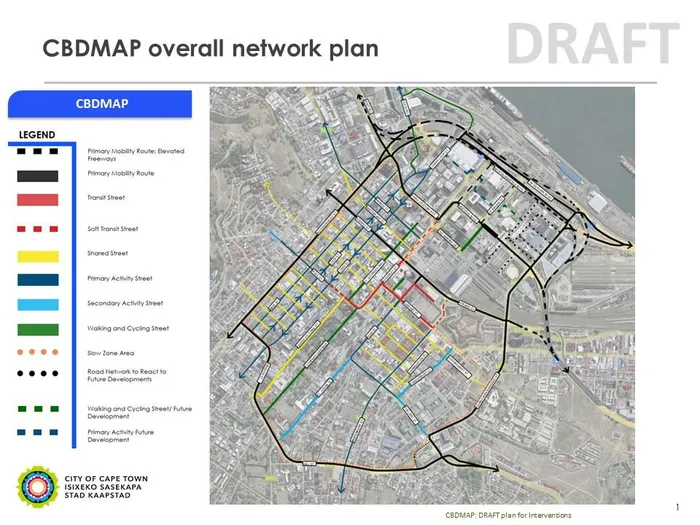
The Mobility and Access Plan is included as part of the draft local spatial development framework (LSDF) for the Cape Town CBD that is available for public comment until 11 May 2025.
Image: Supplied
He also touted other efforts, such as the Urban Mobility Directorate allocating R294 million for road projects to relieve traffic congestion at pressure points in Kuils River (Amandel Road and Saxdowns Road upgrades), Durbanville, Belhar (Erica Drive), Salt River (Voortrekker Road), Maitland (Berkley Road), along the M3 highway and Kommetjie Main Road over the next three years as part of its proposed budget for the medium-term.
He added that the Urban Mobility Directorate’s proposed capital budget over the medium-term, starting on 1 July 2025 until 30 June 2028, amounts to over R7,9 billion, with some key priorities being:
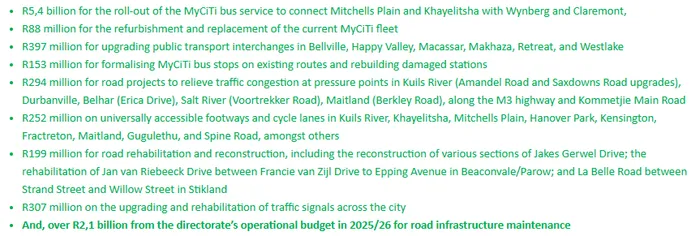
The Urban Mobility Directorate’s proposed capital budget over the medium-term, starting on 1 July 2025 until 30 June 2028, amounts to over R7,9 billion, with some key priorities being:
Image: Screenshot
“However, to keep on expanding road capacity is extremely expensive and time consuming, and only provides short-term relief as evidence shows that the new roads and lanes are only attracting more private vehicles onto the road network.
“The challenge is getting people onto public transport. This is our first strategy in combatting congestion. We need people on buses where the MyCiTi bus service operates with passenger rail as the backbone of public transport, as is the case elsewhere in the world.
“Congestion is symptomatic of economic growth, and this much is evidenced by the other cities, but it is imperative that residents commit to a paradigm shift in how we get from A to B.
“However, the onus can’t be laid squarely at the feet of the commuters – and that is why the City is pushing so hard not only for the devolution of passenger rail, but investing massively in our own public transport services.”
He added that the City is also exploring the implementation of new lanes and infrastructure that are reserved for the use of public transport vehicles only.
“This will bring a greater return on the high costs of expanding road capacity and is aligned with the City's objective of prioritising public transport and will facilitate a modal shift from private vehicles to public transport services over time.”
theolin.tembo@inl.co.za
Related Topics: